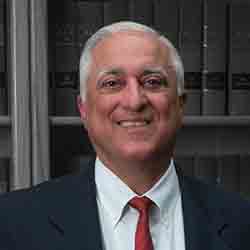Motorcycle Riders Now Allowed to “Lane Filter” in Arizona
 Riding a motorcycle remains a popular pastime for many reasons, including the freedom the open road represents. Unfortunately, motorcycle riders are “invisible” to car and truck drivers too often, resulting in serious or fatal accidents.
Riding a motorcycle remains a popular pastime for many reasons, including the freedom the open road represents. Unfortunately, motorcycle riders are “invisible” to car and truck drivers too often, resulting in serious or fatal accidents.
Motorcyclists in Arizona are now legally able to engage in “lane filtering,” also known as lane splitting. This practice is illegal in most states, but studies suggest it is safer than was once believed. If you are a motorcycle rider in Arizona, learn more about lane filtering and when it is lawful to do so on state and county roads.
What is lane filtering?
Lane filtering, or splitting, refers to motorcycle riders moving in between lanes of traffic. It allows riders to pass other vehicles when traffic has stopped, which saves the motorcyclists time and helps them stay safe. Lane filtering is now legal in Arizona with the goal of reducing the number of rear end motorcyclist-vehicle crashes. Such collisions occur when a motorcyclist has stopped, such as at a red light, and a vehicle driver hits them from behind at a fast speed. These crashes are the most common type of motorcycle-vehicle driver collisions in Arizona and often have fatal consequences.
For lane splitting to remain a legal act in Arizona, the motorcyclist must:
- Not drive faster than 15 miles an hour
- Engage in lane filtering only when there are two lanes of traffic going in the same direction
- Perform the splitting if the speed limit for the area is not more than 45 miles an hour
Gov. Doug Ducey signed SB 1273, making lane filtering legal according to the above conditions in Arizona.
“This law has been four years in the making,” noted Michael Infanzon, the legislative director for ABATE of Arizona. “It was key to have someone who understood the danger of being rear-ended. This is all about safety and nothing more than part of the plan to reduce motorcycle fatalities in Arizona.”
Types of injuries motorcyclists can sustain in vehicular collisions
Because motorcycle riders do not ride closed vehicles, they are more vulnerable to severe injuries compared to drivers of cars and trucks. Some of the most common injuries in motorcycle accidents include:
- Head trauma, such as skull fractures
- Traumatic brain injuries
- Spinal cord damage, including paralysis
- Cuts and lacerations
- Broken bones
- Foot and leg injuries
- Facial injuries
Psychological trauma is also common following motorcycle accidents, with riders potentially experiencing post-traumatic stress disorder, or PTSD, experiencing symptoms such as recurring flashbacks and nightmares, engaging in destructive behavior, insomnia, depression, and irritability.
There are also times when motorcyclists experience fatal injuries. Depending on the collision, they might perish on impact or pass from their injuries at a later date. If your loved one dies in a motorcycle crash, you deserve to be compensated for the loss. Compensation can be recovered for pain and suffering, the funeral and burial expenses, lost wages, loss of future earnings, loss of consortium, and more.
To help solidify your case, you should always follow the doctor’s orders. This includes taking any prescribed medication, going to physical therapy, and attending all follow-up appointments. Straying from medical instructions can help the defense prove that your injuries were not serious or that you simply do not care about them.
It is important that you seek representation from an experienced motorcycle accident attorney in Phoenix about your case. Doing so shows the at-fault party that you are serious about recovering compensation for your injuries and losses.
Establishing liability in Phoenix motorcycle accident claims
Drivers owe duty of care to motorcyclists, pedestrians, bicyclists, and everyone else around them, including other drivers. If they breach this care in any way, they are considered negligent and liable for damages. Negligent drivers might speed or drive while distracted, drowsy, or intoxicated. They might engage in aggressive driving, such as tailgating or intentionally trying to run motorcyclists off the road. Failing to adhere to traffic laws also makes vehicle drivers liable in motorcycle injury cases.
For a driver to be negligent in a Phoenix motorcycle injury case, the rider must show that the driver was being negligent and that neglect directly caused their injuries. For example, if a car driver ignores a red light at an intersection and hits a motorcycle rider as a result, they are liable for the rider’s injuries.
Since Arizona is a comparative negligence state, motorcycle riders receive reduced damage amounts if they are found partially at fault. For example, if a motorcyclist was engaging in aggressive driving at the time of the accident, they could be found 40% at fault for the incident, even if the driver was making an illegal turn. The amount of damages the motorcyclist requested would subsequently be cut by their percentage of fault. For example, if the rider requested $15,000 in damages, they would instead receive $9,000.
The statute of limitations in Arizona for personal injury cases is two years from the date of the accident. If the injuries stemming from the accident were not discovered until later, the two-year statute starts on the date of the discovery.
If you engaged in lawful lane filtering and other proper motorcycle etiquette but were still injured in an accident that was not your fault, it is time to take legal action. Call the attorneys at Plattner Verderame PC today. We operate offices in Phoenix and Tempe, AZ, helping clients with their motorcycle accident cases, among many others, and work on a contingency fee basis. That means we do not get paid unless you win. Call our office, or submit our contact form to schedule a free initial consultation today.

Partner Frank Verderame is a seasoned trial attorney, who has dedicated his life to helping victims of serious injuries. He is a Board Certified Specialist in Personal Injury and Wrongful Death Litigation, and has been an active part of legal communities and organizations since he started his practice, back in 1983.
Read more about Frank Verderame
